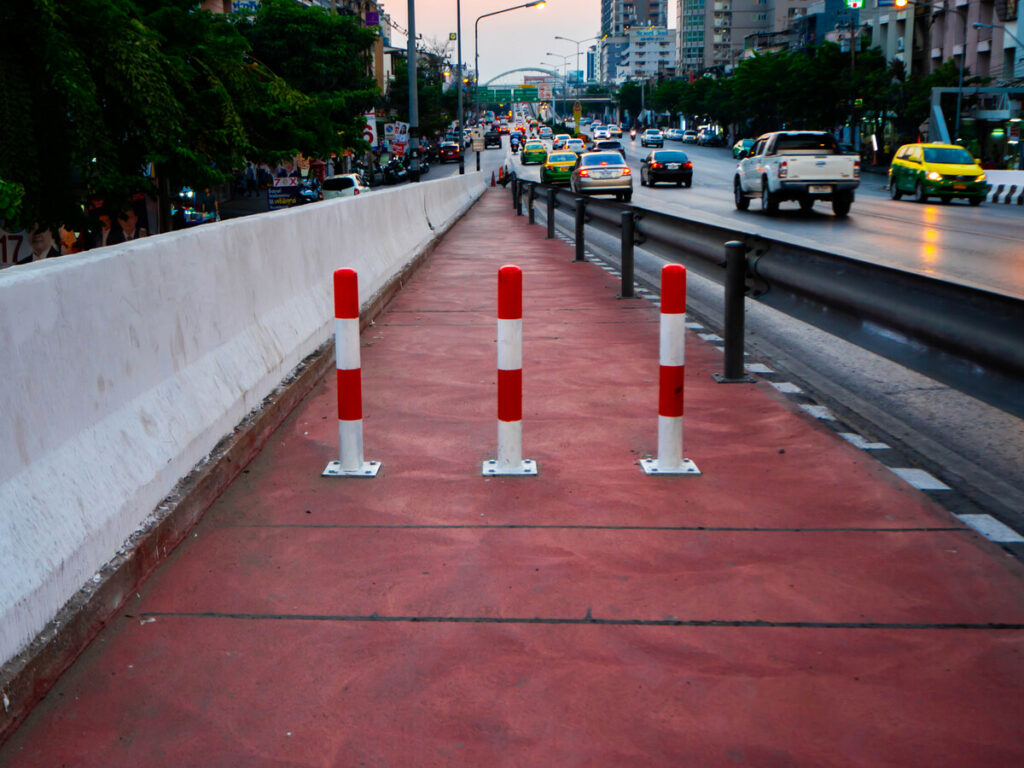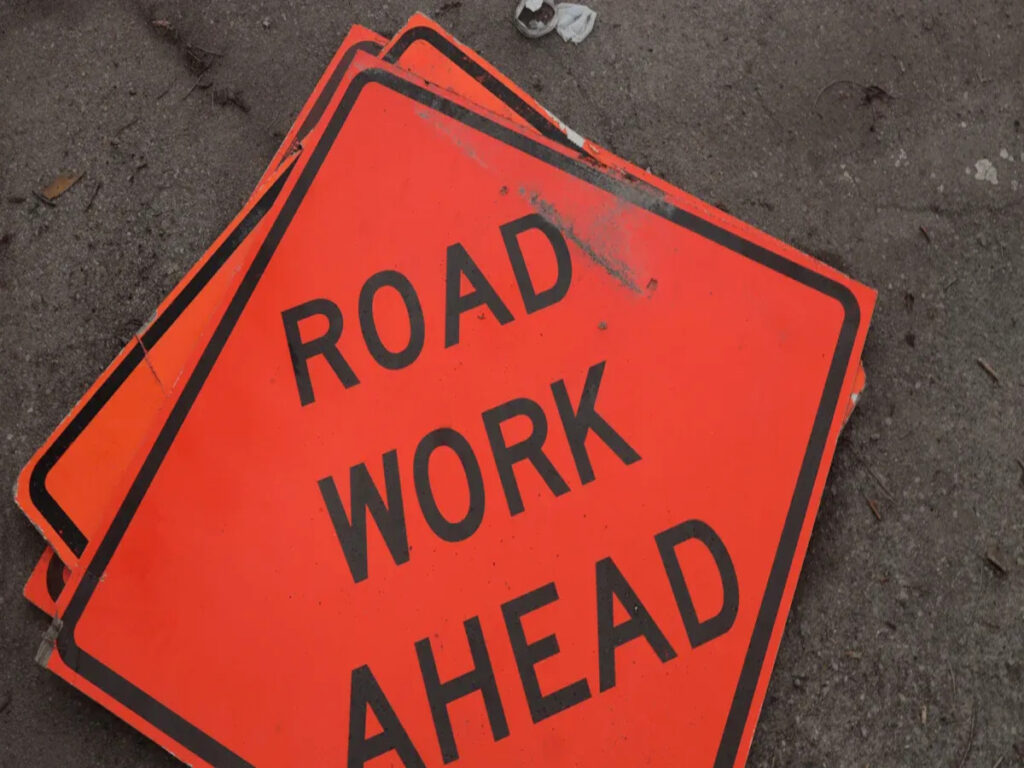
Imagine you manage bolardos de la carretera in a busy city. Traditional maintenance waits for something to break, leading to unexpected failures and high costs. Predictive maintenance changes this. You use sensors to spot problems early. Predictive tools help you plan repairs before failures happen. IoT sensors give real-time data so you can act fast. Predictive maintenance keeps your road bollards working longer. You spend less time fixing and more time reducing costs. This approach makes maintenance smarter, más seguro, y más confiable.
Control de llave
- Predictive maintenance uses IoT sensors to spot problems in road bollards early, preventing costly failures.
- Real-time data from sensors helps you act quickly and plan repairs before breakdowns happen.
- This approach reduces maintenance costs and downtime by fixing small issues before they grow.
- Predictive maintenance improves road safety by keeping bollards working reliably and avoiding accidents.
- Smart systems and alerts make maintenance more efficient, saving time and resources for your team.
Predictive Maintenance in Road Bollards
Why Predictive Maintenance Matters
You want your road bollards to work every day without problems. Predictive maintenance helps you reach this goal. With predictive maintenance, you use data from sensors to check the health of your road bollards. This approach lets you spot small issues before they become big failures. You can plan repairs at the right time. This saves you money and keeps your roads safe. Predictive maintenance also helps you use your team and resources better. You do not waste time on unneeded checks. En cambio, you focus on real problems. Predictive maintenance gives you more control over your maintenance work.
Risks of Reactive Maintenance
If you wait for road bollards to break before fixing them, you face many risks. Reactive maintenance often leads to higher costs and more safety problems. Outdated inspection methods miss early signs of trouble. You only find out about issues after damage has happened. This means you spend more on emergency repairs. You also put drivers and pedestrians at risk. When you fix problems late, you do not solve the root cause. Con el tiempo, these failures add up. Your maintenance budget grows, and your roads become less safe. Predictive maintenance helps you avoid these problems by using data and proactive monitoring.
IoT Sensors Transforming Maintenance
IoT predictive maintenance changes how you care for road bollards. Sensors collect data about vibration, pressure, and temperature. This data gives you a clear picture of each bollard’s condition. You can see problems as soon as they start. With real-time monitoring, you act fast and prevent failures. IoT predictive maintenance lets you make smart decisions. You use data to plan repairs and replacements. This keeps your road bollards working longer and saves you money. IoT predictive maintenance turns your maintenance from reactive to proactive. You protect your investment and improve safety for everyone.
IoT-Based Predictive Maintenance Systems
What Is IoT Predictive Maintenance
IoT-based predictive maintenance uses sensors and data to keep your infrastructure running smoothly. You place sensors on your road bollards. These sensors collect data about how each bollard works. The data goes to a cloud platform. Allá, smart algorithms look for signs of trouble. If the system finds a problem, it tells you before a failure happens. This approach helps you plan maintenance at the right time. You avoid unplanned downtime and save money. IoT predictive maintenance gives you a clear view of your assets. You can make better decisions and keep your infrastructure safe. Many industries, like transportation and energy, use this method to improve reliability and efficiency.
IoT predictive maintenance systems help you move from guessing to knowing. You use real-time data and predictive analytics to spot issues early and act fast.
Types of IoT Sensors for Road Bollards
You need the right sensors for effective predictive maintenance. Each sensor type gives you different data about your road bollards:
- Vibration sensors: These sensors detect changes in movement. They help you find mechanical wear or damage.
- Pressure sensors: These sensors measure force or load. They show if a bollard faces too much stress or impact.
- Temperature sensors: These sensors track heat. They warn you if a bollard gets too hot, which can signal electrical or mechanical problems.
- Ultrasonic sensors: These sensors use sound waves to check for cracks or hidden damage inside the bollard.
Research shows that vibration, pressure, and temperature sensors work well in harsh environments. They give you reliable data for predictive maintenance. You can use these sensors to monitor both the physical and environmental conditions of your road bollards.
Real-Time Data and Monitoring
Real-time data is the heart of predictive maintenance. Your sensors send data every second. You see the health of each bollard as it happens. If a sensor finds something wrong, you get an alert right away. This lets you act before a small issue becomes a big problem. Real-time monitoring means you do not have to wait for scheduled checks. You always know the condition of your infrastructure. Cities like Singapore and the Port of Rotterdam use real-time data from smart bollards to improve safety and reduce costs. With predictive maintenance, you keep your roads safer and your maintenance smarter.
Benefits of IoT Predictive Maintenance

Reducing Downtime and Costs
You want your road bollards to work all the time. Predictive maintenance helps you reach this goal by using data from sensors to watch each bollard. When you use predictive maintenance, you can plan repairs before failures happen. This means you avoid sudden equipment downtime. You do not have to wait for something to break. En cambio, you fix small problems early. This approach helps you reduce maintenance costs because you spend less on emergency repairs and replacements.
You also save money by using your team and resources better. You do not waste time on unneeded checks. Predictive maintenance gives you cost efficiency because you only repair what needs fixing. Con el tiempo, you see lower costs and better reliability. Your road bollards last longer, and you spend less on new equipment. Predictive maintenance is a smart way to keep your city safe and your budget under control.
Consejo: Predictive maintenance helps you avoid expensive surprises and keeps your maintenance costs low.
Early Failure Detection
Predictive maintenance uses data from sensors to spot problems before they get worse. You can see early signs of wear or damage in your road bollards. This helps you act fast and prevent failures. By predicting failures, you stop small issues from turning into big repairs. You also keep your roads safer for everyone.
Sensors collect data on vibration, pressure, and temperature. This data shows you how each bollard is working. When something changes, you get an alert. You can check the problem and fix it right away. Predictive maintenance gives you more control and helps you avoid sudden breakdowns. You improve reliability and keep your maintenance work on track.
Improved Safety and Efficiency
Predictive maintenance does more than save money. It also makes your roads safer and your team more efficient. IoT sensors give you real-time data, so you always know the health of your bollards. You can act before failures happen, which means fewer accidents and less risk for drivers and pedestrians.
- IoT-enabled devices collect and send real-time data, so you can monitor asset health all the time.
- AI and machine learning look at sensor data to predict equipment failures before they happen.
- Predictive maintenance reduces unplanned downtime and helps you optimize your maintenance schedule.
- You enhance reliability by preventing accidents and keeping your assets in good shape.
- Operational efficiency improves because you use your team and resources better.
- Digital twins and big data analytics give you real-time support for smart decisions.
AI-driven digital twins work with IoT sensors to watch for abnormal patterns in your equipment. You can make proactive choices and avoid costly repairs. This setup helps you reduce maintenance costs and improve reliability. You also keep your city safer by stopping failures before they cause harm. Predictive maintenance gives you enhanced reliability and helps you build a smarter, safer city.
Implementing Predictive Maintenance Systems

Choosing IoT Sensors
You start building predictive maintenance systems by selecting the right sensors. These sensors are the key components of a predictive maintenance system. You need sensors that can measure vibration, pressure, and temperature. Each sensor gives you different data about your road bollards. Vibration sensors help you find early signs of wear. Pressure sensors show if a bollard faces too much force. Temperature sensors warn you about overheating. You choose sensors based on the type of bollard and the environment. Good sensors make predictive maintenance more accurate and reliable.
Integration with Maintenance Platforms
After you choose sensors, you connect them to your maintenance platform. This step helps you collect and use data from all your bollards. You use predictive maintenance systems to bring sensor data into one place. The platform shows you the health of each bollard. You can plan repairs and track work orders. Predictive maintenance systems help you see patterns and predict failures. You use the data to make smart decisions. This integration saves time and helps your team work better. You keep your maintenance on schedule and avoid surprises.
Real-Time Alerts and Dashboards
Real-time alerts and dashboards are powerful tools in predictive maintenance systems. You get instant updates when sensors find a problem. Dashboards show you live data and trends. You can act fast and prevent failures. The table below shows how real-time tools improve maintenance:
| Métrico / Improvement Area | Impacto / Resultado |
|---|---|
| Reduction in repair times via real-time diagnostics | 33% faster repairs |
| Reduction in equipment downtime from predictive alerts | 63% less downtime |
| Early detection of parts shortages (advance notice) | 48 hours before impact |
| Faster resolution of critical outages | 58% quicker |
| Increase in daily tasks completed | 22% more tasks |
| Reduction in same-day reschedules | 79% fewer reschedules |
- Real-time dashboards help you spot parts shortages early, giving you up to 48 hours to act.
- Live job boards and alerts reduce scheduling errors by over 70%.
- Predictive analytics turn data into actions, letting you handle more jobs each day.
- Two-way communication tools give your team updates on traffic and parts, making work smoother.
You use predictive maintenance systems to keep your city safe and your costs low. Real-time alerts help you fix problems before they grow. Dashboards help you see the big picture and plan ahead. Predictive maintenance gives you control and confidence in your maintenance work.
Case Studies and Challenges
Urban Road Bollard Success Stories
Cities around the world have seen real benefits from using predictive maintenance for road bollards. You can see how different cities use smart technology to improve safety and efficiency. La siguiente tabla muestra algunos ejemplos:
| Ciudad | Predictive Strategy / Tecnología | Outcomes / Beneficios |
|---|---|---|
| Konya, Turkey | Smart bollards with cameras and sensors integrated with ITS; real-time traffic signal adjustment | 30% reduction in junction wait times; 40% reduction in carbon emissions due to improved flow |
| Amsterdam, Países Bajos | Retractable bollards integrated with traffic management system; automated vehicle access control | 10% reduction in vehicle loss hours; improved safety and traffic efficiency |
| Singapur | Bollards integrated with ITS and smart city infrastructure providing real-time data | Reduced congestion; enhanced pedestrian safety; preparation for autonomous vehicles |
| Charlotte, North Carolina | Data-driven traffic monitoring with bollard placement guiding vehicle and pedestrian flow | 35% reduction in traffic caused by parking search; improved road safety and air quality |
These cities use predictive maintenance to keep bollards working well. You can see fewer delays, safer roads, and better air quality. Predictive strategies help you plan repairs and avoid sudden failures.
Overcoming Implementation Barriers
When you start using predictive maintenance, you may face some challenges. High costs for new sensors and systems can slow down your plans. You might worry about keeping your data safe. A veces, different systems do not work well together. You need to train your team to use new tools. You can solve these problems by working with trusted partners and investing in training. Good planning helps you get the most from your maintenance system.
Consejo: Start small with a pilot project. You can learn what works best for your city before expanding your predictive maintenance program.
Future Trends in IoT Predictive Maintenance
You will see many changes in predictive maintenance for road bollards in the next few years. Here are some trends to watch:
- The smart parking bollards market will grow quickly, reaching about $8 mil millones por 2033.
- AI and 5G will make predictive maintenance faster and more accurate.
- Future bollards will have more features, like sensors for air quality and charging stations for electric cars.
- Cities will use predictive analytics to manage parking and traffic better.
- More research and teamwork will help solve problems with cost and system compatibility.
You can expect predictive maintenance to become even more important as cities grow and technology advances.
You gain many benefits when you use predictive maintenance with IoT sensors for road bollards. The table below shows the main advantages:
| Ventaja / Gain | Descripción |
|---|---|
| Cost Reduction | Maintenance costs reduced by up to 40%. |
| Downtime Reduction | Equipment downtime decreased by up to 50%. |
| Asset Life Extension | Useful life of assets extended by 3-5%. |
| Monitoreo en tiempo real | Sensors track conditions for early problem detection. |
| Shift to Predictive | Moves from reactive to data-driven strategies, improving safety and planning. |
You help your city stay safer, ahorrar, and keep roads running smoothly. Start using predictive maintenance to make your maintenance smarter and more reliable.
Preguntas frecuentes
What is predictive maintenance for road bollards?
You use predictive maintenance to monitor road bollards with sensors. These sensors collect data about the bollards’ condition. You can spot problems early and plan repairs before failures happen.
How do IoT sensors help prevent bollard failures?
You install IoT sensors on each bollard. These sensors track vibration, pressure, and temperature. You receive alerts when something changes. This helps you fix issues before they cause a failure.
Can you use predictive maintenance in all weather conditions?
You can use predictive maintenance in most weather conditions. Many sensors work well in rain, nieve, o calor. You should choose sensors designed for your local climate to get the best results.
How does predictive maintenance save money?
Save money by fixing small problems before they become big repairs. You avoid emergency maintenance and reduce downtime. You also use your team and resources more efficiently.
Do you need special training to use predictive maintenance systems?
You may need some training to use new systems and dashboards. Most platforms offer simple interfaces. You can learn how to read alerts and use data to plan maintenance tasks.



















